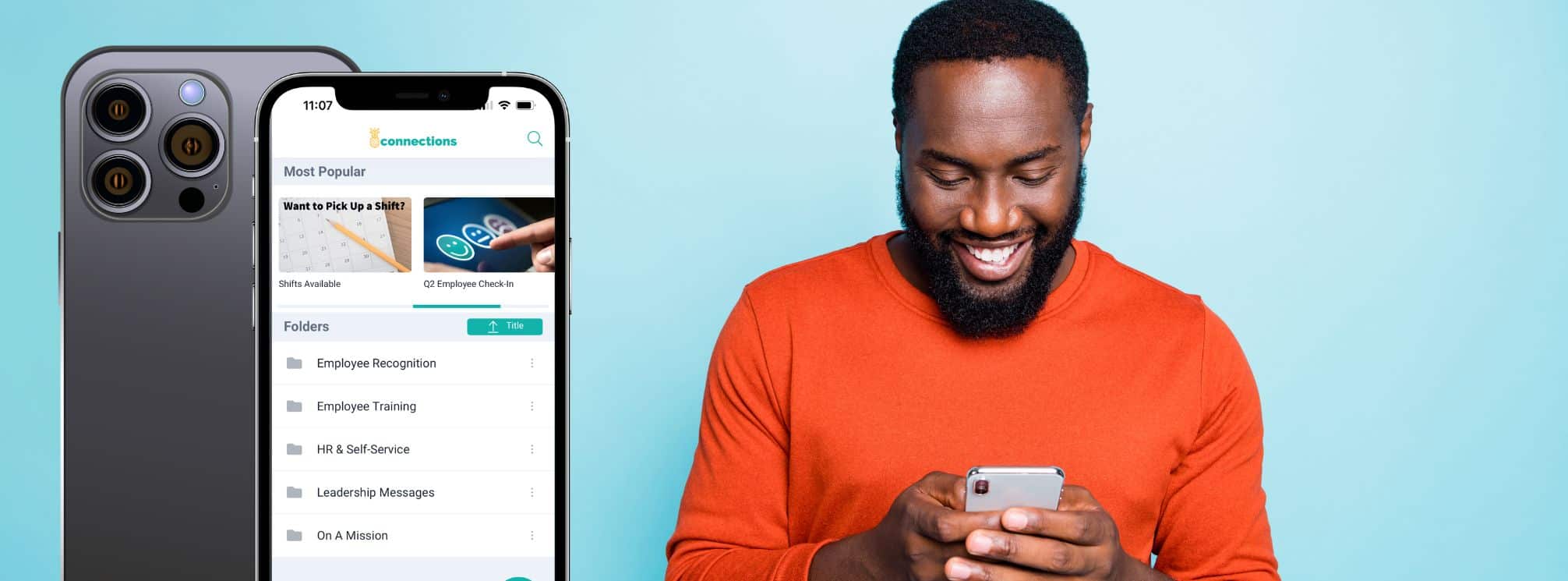
In recent years, a wave of providers has swept in, claiming to be the ultimate internal communication platform for frontline workers. One of the biggest: Microsoft. You may have heard of products like Microsoft Teams, Microsoft Yammer, and Microsoft Viva Engage. All these tools boast about the collaboration and connection they can give your frontline teams. But here’s the truth: these platforms fall short when it comes to delivering effective communication for frontline workers. It’s time to dig deeper and uncover what truly makes a communication platform effective for those on the frontlines.
Internal communication platforms are digital tools designed to facilitate communication and collaboration within a company. These platforms can take a variety of forms, from collaboration tools (e.g. Teams) to resource hubs (e.g. employee intranets).
But they all have the goal to help employees find resources, receive important updates, and help them get their jobs done, regardless of where they work.
 An internal communication platform gone wrong
An internal communication platform gone wrongThe goal of internal comms platforms is to make our employees’ lives easier by more effectively communicating. But it’s so important to find the right channels for each of your employee segments. Office and remote workers who use a computer all day probably love your collaboration tools and peer-to-peer chat product.
But are these the right fit for frontline workers? And if not…why promote them like they are?
Let’s take a closer look at each of Microsoft’s products.
Let’s look at Teams first. In their marketing copy, Microsoft calls Teams a tool for “Video Conferencing, Meetings, Calling.” But these internal comms solutions are really suited for desk workers. Video calls and peer-to-peer chat collaboration is not something your warehouse managers or third shift assembly team need to do their jobs.
Teams launched in 2017 and has largely remained the same as a chat-based internal comms platform. However, it hardly resembles a robust communications app designed for frontline employees. Yet they continue to market it as a frontline worker communication solution.
As for Teams’ cousin, Yammer, they claim to be the “Enterprise Social Network.”
Are we ready for that?
Yammer promises to be a “collaboration tool that helps you connect and engage across the company. Start conversations, share knowledge, and build communities.” Collaboration, connection, and engagement….all looped into another Office 365 subscription. But, again, the way Yammer works is more suited for a deskbound worker. Frontline teams don’t need Office 365. They don’t need a peer-to-peer chat.
Not to mention, most “enterprise social media” falls short. Companies don’t need to—and frankly cannot—replace social media internally for their employees. It does not build culture as well as good benefits, the right values, and a psychologically safe environment. It’s all marketing, and many companies fall for it.
A recent study from Swoop Analytics on Yammer and Viva Engage usage shows just what a frustrating place Yammer has become. The report finds “while 80 – 85% of staff are accessing Yammer, almost 60% are reading only—they don’t post, comment, or react. 17% are mildly active “observers,” leaving just 10% with active personas.”
That brings us to the most recent Microsoft announcement for yet another internal communications product: Viva Engage.
Viva Engage takes what Yammer started for posts and social engagement and repositions it to resemble large social networks like Meta, Instagram, and LinkedIn. The understanding is that Viva Engage will then become the Viva Engage Team app, taking the chat function from Teams and replacing the Microsoft Community App, becoming a gateway to Yammer. All of which is eventually going to be a concoction named Viva Engage.
Let’s pause there.
[optin-monster slug=”obmubamqawhjdqdninbo” followrules=”true”]
The focus is lost. The core of your employee communications app strategy needs to be rooted in the efficiency and effectiveness of the tools and technology into tools that your entire workforce can use and access.
Microsoft apps are desktop-focused and not frontline-inclusive. Just think about it. You would be asking a frontline worker to download 2 – 3 mobile apps for work communications only. This is in addition to other apps they might be using for their specific job. This just doesn’t make sense.
Deploying a suite of apps takes a significant amount of funding, involvement from IT, senior leadership time, and resources. Is it worth it?

To choose the right employee app for your deskless workforce, you should start by examining what these employees have access to in the first place.
We recommend doing an internal comms audit at least once a year. This will help you see what messages and channels frontline workers can access compared to what they should be receiving.
Our clients have all chosen mobile apps for employee communication because:
It’s time to reduce the noise and focus on what matters: efficient communications delivered directly to your workforce and not through messages and social posts dotted across multiple platforms, that not all workers have access to in the first place.
Are you ready to see how our employee app can help you define the need for a mobile communications app at your company?
Request a demo today and see it in action.
[optin-monster slug=”gqorn0natkqgyrtjvr6i” followrules=”true”]
Michael Marino is the Vice President of Marketing where he oversees the creation and execution of theEMPLOYEEapp’s marketing programs. Before joining the team, Mike held marketing leadership positions in both the B2B and DTC spaces in channels that include media, manufacturing, and professional services. Mike is passionate about demand generation, mar-tech, and being able to create campaigns that connect with Internal Comms audiences.